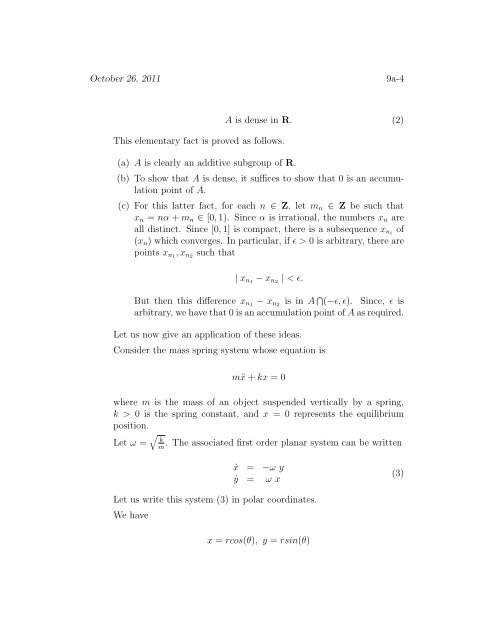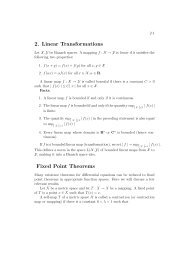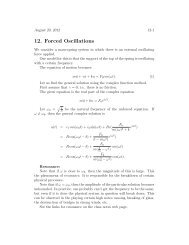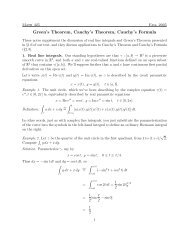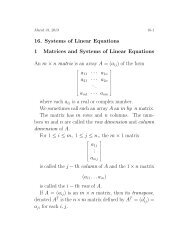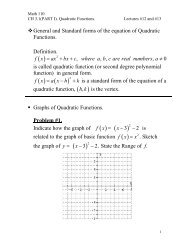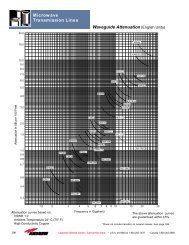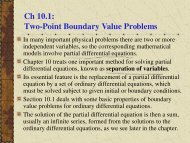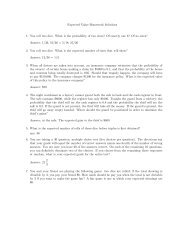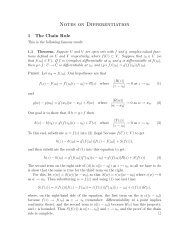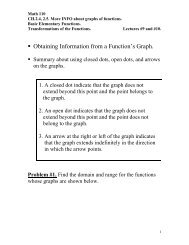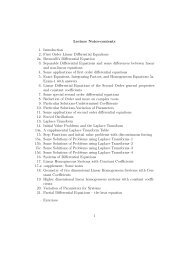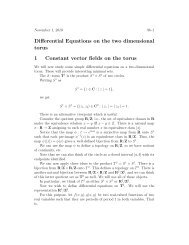Differential Equations on the two dimensional torus
Differential Equations on the two dimensional torus
Differential Equations on the two dimensional torus
Create successful ePaper yourself
Turn your PDF publications into a flip-book with our unique Google optimized e-Paper software.
October 26, 2011 9a-4This elementary fact is proved as follows.(a) A is clearly an additive subgroup of R.A is dense in R. (2)(b) To show that A is dense, it suffices to show that 0 is an accumulati<strong>on</strong>point of A.(c) For this latter fact, for each n ∈ Z, let m n ∈ Z be such thatx n = nα + m n ∈ [0, 1). Since α is irrati<strong>on</strong>al, <strong>the</strong> numbers x n areall distinct. Since [0, 1] is compact, <strong>the</strong>re is a subsequence x ni of(x n ) which c<strong>on</strong>verges. In particular, if ɛ > 0 is arbitrary, <strong>the</strong>re arepoints x n1 , x n2 such that| x n1 − x n2 | < ɛ.But <strong>the</strong>n this difference x n1 − x n2 is in A ⋂ (−ɛ, ɛ). Since, ɛ isarbitrary, we have that 0 is an accumulati<strong>on</strong> point of A as required.Let us now give an applicati<strong>on</strong> of <strong>the</strong>se ideas.C<strong>on</strong>sider <strong>the</strong> mass spring system whose equati<strong>on</strong> ismẍ + kx = 0where m is <strong>the</strong> mass of an object suspended vertically by a spring,k > 0 is <strong>the</strong> spring c<strong>on</strong>stant, and x = 0 represents <strong>the</strong> equilibriumpositi<strong>on</strong>.√Let ω = k. The associated first order planar system can be writtenmẋ = −ω yẏ = ω x(3)Let us write this system (3) in polar coordinates.We havex = rcos(θ), y = rsin(θ)


